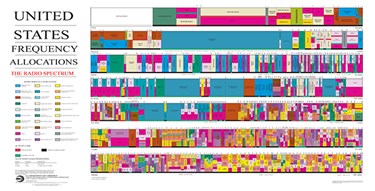DARPA Picks 30 Contenders For First Phase Of Spectrum Collaboration Challenge
By Jof Enriquez,
Follow me on Twitter @jofenriq

The Defense Advanced Research Projects Agency (DARPA) has announced the 30 participants for the first of three year-long phases of the Spectrum Collaboration Challenge (SC2), a contest designed to apply collaborative machine learning to software-defined radios for dynamic spectrum allocation.
DARPA in March 2016 launched the competition with the stated aim "to imbue radios with advanced machine-learning capabilities so they can collectively develop strategies that optimize use of the wireless spectrum in ways not possible with today’s intrinsically inefficient approach of pre-allocating exclusive access to designated frequencies."
For the first phase this year, 30 contenders – 22 teams from academia (including Carnegie Mellon University and Georgia Tech) and small and large companies, plus eight individuals – were chosen to participate. Six teams are competing in the “Proposal Track,” which includes $500,000 of funding. Twenty-four teams, including all of the individual contenders, are participating under the “Open Track,” which means they had to pass technical hurdles specified by SC2 organizers but will pay their own costs, according to a news release.
"Competitors will reimagine spectrum access strategies and develop a new wireless paradigm in which radio networks will autonomously collaborate and reason about how to share the RF spectrum, avoid interference, and jointly exploit opportunities to achieve the most efficient use of the available spectrum," stated DARPA.
Using what DARPA calls “the Colosseum” channel emulation testbed, participating SC2 teams will conduct remote experiments with intelligent radio systems in realistic, user-defined RF environments, such as the wireless conditions of a busy city neighborhood or battle setting, according to Network World.
The Colosseum is said to be the world’s largest channel emulator, and supports up to 256-by-256-channel, real-time channel emulation, calculating more than 65,000 channel interactions at up to 80 MHz of real-time bandwidth per channel. Based on the USRP X310 software defined radio and NI ATCA-3671 high-performance FPGA processing system, the testbed will be housed at the Johns Hopkins University Applied Physics Laboratory in Laurel, MD.
All 30 teams will have to meet several requirements throughout the year to prepare for the Preliminary Event #1 Competition in December 2017. Top performers during phase 1 will proceed to phase 2 next year, which culminates in another event competition in December 2018. The third and final phase, to be held until the final competition at the end of 2019, will award $2 million, $1 million, and $750,000 prizes, respectively, to the top three finishers.
An exponentially growing number of military and civilian wireless devices are competing for tightening electromagnetic spectrum, which is pretty crowded between 9 kHz and 275 GHz, the range allocated by the Federal Communications Commission (FCC). Spectrum re-use and other techniques have kept up with our communications needs so far. But DARPA believes artificial intelligence and machine learning technologies should bring significantly wider capacity compared to that offered currently by fixed frequencies.
"This human-driven process is not adaptive to the dynamics of supply and demand, and thus cannot exploit the full potential capacity of the spectrum. In SC2, competitors will reimagine a new, more efficient wireless paradigm in which radio networks autonomously collaborate to dynamically determine how the spectrum should be used moment to moment," DARPA stated in the SC2 web site.
- Aipaca – Evanston IL, USA & Hong Kong
- Air Orange – Syracuse NY, USA
- CMU – Pittsburgh PA, USA
- Collaborative Radio Cloud – Alexandria, Egypt
- Dragon Radio – Philadelphia PA, USA
- Entropy – Lawrenceville NJ, USA
- Erebus – Rochester NY, USA
- GatorWings – Gainesville FL, USA
- Georgia Tech Agile Communication Architectures – Atlanta GA, USA
- Hollender – Santa Rosa CA, USA
- IRIS – San Diego CA, USA
- Ligado Networks – Reston VA, USA
- MarmotE – Nashville TN, USA
- No Limit Texas Spectr’em – Dallas TX, USA
- Optical Spectrum – Broomfield CO, USA
- SCATTER – Heverlee Vlaams-Brabant, Belgium
- SINC – Los Altos CA, USA
- SODIUM-24 – Redmond WA, USA
- SpeCOlab – Boulder CO, USA
- SpectrumMason – Fairfax VA, USA
- Strawberry Jammer – Aurora CO, USA
- Syncopated – Ellicott City MD, USA
- Andersons – Cookeville TN, USA
- WolfPack – Raleigh NC, USA
- Berkeley Bell Labs – Berkeley CA, USA
- SHARE THE PIE – Merrimack NH, USA
- BAM! Wireless – West Lafayette IN, USA
- Spectrum Without Borders – Blacksburg VA, USA
- Sprite – Boston MA, USA
- Zylinium – Gaithersburg MD, USA
